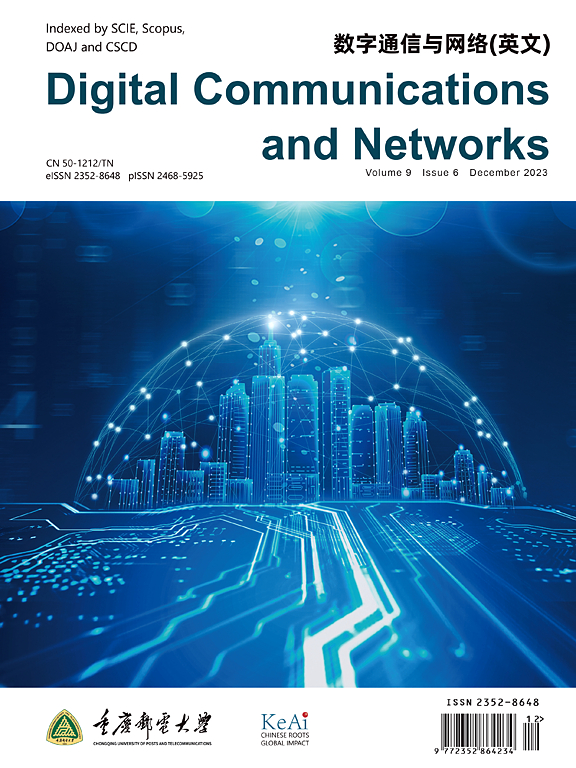Toward edge-computing-enabled collision-free scheduling management for autonomous vehicles at unsignalized intersections
IF 7.5
2区 计算机科学
Q1 TELECOMMUNICATIONS
引用次数: 0
Abstract
With the support of Vehicle-to-Everything (V2X) technology and computing power networks, the existing intersection traffic order is expected to benefit from efficiency improvements and energy savings by new schemes such as de-signalization. How to effectively manage autonomous vehicles for traffic control with high throughput at unsignalized intersections while ensuring safety has been a research hotspot. This paper proposes a collision-free autonomous vehicle scheduling framework based on edge-cloud computing power networks for unsignalized intersections where the lanes entering the intersections are undirectional, and designs an efficient communication system and protocol. First, by analyzing the collision point occupation time, this paper formulates an absolute value programming problem. Second, this problem is solved with low complexity by the Edge Intelligence Optimal Entry Time (EI-OET) algorithm based on edge-cloud computing power support. Then, the communication system and protocol are designed for the proposed scheduling scheme to realize efficient and low-latency vehicular communications. Finally, simulation experiments compare the proposed scheduling framework with directional and traditional traffic light scheduling mechanisms, and the experimental results demonstrate its high efficiency, low latency, and low complexity.
在无信号交叉路口为自动驾驶车辆提供边缘计算支持的无碰撞调度管理
本文章由计算机程序翻译,如有差异,请以英文原文为准。
求助全文
约1分钟内获得全文
求助全文
来源期刊

Digital Communications and Networks
Computer Science-Hardware and Architecture
CiteScore
12.80
自引率
5.10%
发文量
915
审稿时长
30 weeks
期刊介绍:
Digital Communications and Networks is a prestigious journal that emphasizes on communication systems and networks. We publish only top-notch original articles and authoritative reviews, which undergo rigorous peer-review. We are proud to announce that all our articles are fully Open Access and can be accessed on ScienceDirect. Our journal is recognized and indexed by eminent databases such as the Science Citation Index Expanded (SCIE) and Scopus.
In addition to regular articles, we may also consider exceptional conference papers that have been significantly expanded. Furthermore, we periodically release special issues that focus on specific aspects of the field.
In conclusion, Digital Communications and Networks is a leading journal that guarantees exceptional quality and accessibility for researchers and scholars in the field of communication systems and networks.
 求助内容:
求助内容: 应助结果提醒方式:
应助结果提醒方式:


